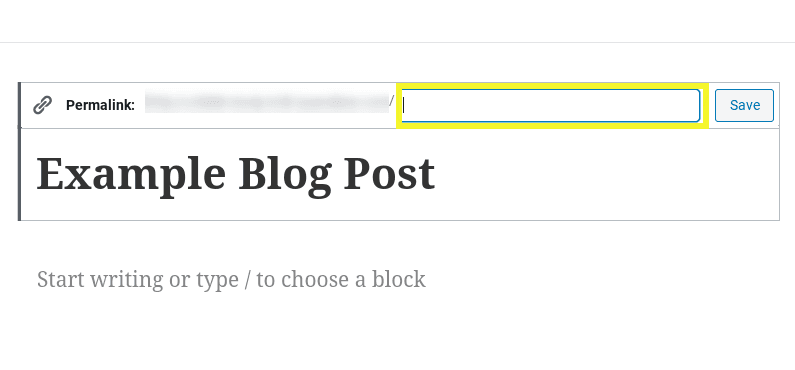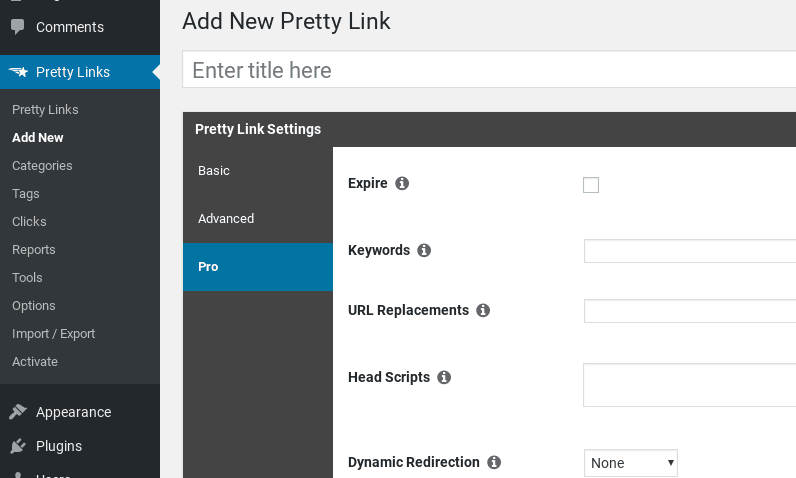3 Gründe, warum Menschen nicht auf Ihre Links klicken

Inhalt
Imagine spending a considerable amount of time crafting a piece of unique, valuable content. You may have even work-shopped a dozen headlines before landing on the perfect one. However, after sharing the content, you find that it isn’t generating nearly as many clicks as you’d hoped.
Wenn es um digitales Marketing geht, sind Klicks eine Währung. Daher ist die Entwicklung einer Strategie zur Optimierung und Verbesserung Ihrer Links can go a long way toward boosting your marketing efforts. Many companies don’t give a second thought to their links. However, there are techniques you can use to help your links give you a competitive edge.
In diesem Beitrag gehen wir auf einige der häufigsten Fehler ein, die Unternehmen bei ihren Links machen. Dann erklären wir drei Gründe, warum Menschen möglicherweise nicht auf Ihre Links klicken, und wie Sie sie vertrauenswürdiger erscheinen lassen können. Fangen wir an!
Warum Links für Ihr Online-Marketing so wichtig sind
As a marketer, you already know that content is king. Unfortunately, the popular expression “build it and they will come” doesn’t apply to online marketing. If you want your content to capture attention and drive conversions in today’s crowded digital environment, you need to build a bridge connecting your audience to your offerings.
Links sind die Fahrzeuge, die potenzielle Kunden zu Ihren Produkten führen. Sie können alles beeinflussen - Suchmaschinenoptimierung (SEO)Website-Verkehr, Engagement und Konversionsraten, and more. Put simply, they’re a hugely important element of effective online marketing.
Backlinks, permalinks, and internal links all play an important role in the content marketing chain. How they’re formatted and where they’re placed can make the difference between a loyal customer and a lost one.
3 Gründe, warum Menschen nicht auf Ihre Links klicken
The first step in figuring out how to use links in your favor is uncovering current methods that might be hurting you. Let’s take a look at three reasons people may not click on your links.
1. Die Linklänge lässt es spammig aussehen
Earning consumers’ trust is essential when it comes to marketing. Unfortunately, autogenerated links often include superfluous characters.
More than looking long and unsightly, they can appear untrustworthy. Most online consumers today are at least somewhat aware of the dangers of the internet. No one wants to fall victim to a malware attack or similar cyber criminal behavior. So to many people, links that look even slightly suspicious aren’t worth the risk.
Um zu verhindern, dass Verbraucher Ihre Links vorschnell als Spam abtun, hilft es, wenn Sie Ihre Permalinks kürzen. This is easy to do in WordPress. Simply click into the title box of your post or page, then click on bearbeiten neben dem Permalink Feld:

The best practice with permalinks is to include only what’s necessary. For example, boil it down to the main keywords that indicate what the post is about. In fact, you could even simply use the focus keyword of your post.
2. Ihre Links heben sich nicht ab
Ähnlich wie Schaltflächen für Aufforderungen zum Handeln (CTA), it’s important to make sure your links are properly placed and visible. People won’t click on a link or button if they don’t realize it’s there.
Auf den meisten Plattformen ist die Standardeinstellung für Hyperlinks blau. Dies hilft den Menschen, einen Link zu erkennen, der sie hoffentlich zu relevanten Inhalten führt.
Um Ihre Links hervorzuheben, sollten Sie kräftige Farben verwenden, die einen starken Kontrast zu den anderen Elementen auf der Seite bilden. Um Farben zu wählen, die einen komplementären Kontrast bilden, können Sie eine Werkzeug wie Color Safe:

Color Safe makes it easier to generate a color palette based on your brand colors. It also helps by recommending colors that won’t hurt content accessibility.
3. Die Benutzer wissen nicht, wohin der Link führt
If you want to convince someone to cross a bridge, it’s going to be a lot easier if they know where it leads. The problem with a lot of autogenerated links is that they don’t offer transparency. Even some generic link shortening tools are guilty of this.
To avoid confusion or distrust, it’s critical to give the reader at least an idea of where they’re headed. People are more likely to click on a link if they know what site it’s pointing at or what the topic is about.

Die Einbindung Ihrer Marke in die URL (auch bekannt als Link Branding) doesn’t just instill trust and transparency. It can also help boost brand awareness.
Wie Sie Ihr Erscheinungsbild vertrauenswürdiger gestalten
Gekürzte Links sind genau das, wonach sie klingen: verkürzte Versionen von ansonsten langen URLs. In ähnlicher Weise enthalten Links mit Markenzeichen eine Version des Markennamens.
To make your links appear more trustworthy (and boost their clickability), it’s a good idea to use short, branded URLs. Not only are they better looking, they’re also more memorable.
Sie können dies mit unserem Pretty Links Plugin:

Mit der kostenlosen Shortlinks-Version des Pretty Links-Plugins können Sie direkt von Ihrem WordPress-Dashboard aus saubere Links erstellen. Von Aufsteigen auf den Premium-Tarif, it’s just as easy to brand your links.
Schlussfolgerung
Nicht alle Links sind gleich. Wenn Sie mit der Anzahl der Klicks auf Ihre Inhalte unzufrieden sind, liegt das möglicherweise daran, dass Ihre Links problematisch sind. Wenn Sie möchten, dass Ihre Inhalte mehr Klicks generieren, müssen Sie sicherstellen, dass Ihre Links vertrauenswürdig sind.
Wie wir in diesem Artikel besprochen haben, gibt es drei Gründe, warum Menschen nicht auf Ihre Links klicken (die unser Pretty Links-Plugin können Ihnen bei der Prävention helfen) sind:
- Die Länge der Links lässt sie spammig erscheinen.
- Ihre Links stechen nicht hervor.
- Die Nutzer wissen nicht, wohin der Link führt.
Haben Sie noch Fragen dazu, wie Sie Ihre Links vertrauenswürdiger gestalten können? Lassen Sie es uns in den Kommentaren unten wissen!